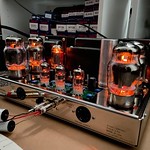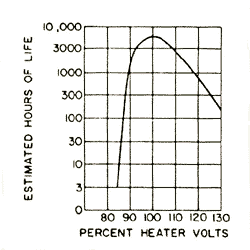mdelrossi wrote:Hello,
I know from reading on this forum that the first 2 tubes are for the RIAA, and the second 2 are for the buffer.
So my question is, should I put 2 accurate EH 6dj8/6922's in the first position, and tube roll for different sound in the second 2. Or do I need all 4 to be the same?
Also any suggestions on tubes would be great.
I had the EH in there and recently got some amperex "good" tested tubes and it sounds a bit more tubey.
You are beginning to understand the difference between Tube and SS.
Which is much the same as between Accuracy and Precision.
Solid-State audio amps may be made to be both precise - each one the same as its before-and-after on the assembly line - and accurate - straight-wire-with-gain. State-of-the-art in solid-state amps was reached no later than the 1980s. This is not even to suggest that all solid-state amps 'sound the same', but that the ability to make them so became common-place and well understood.
Tube amps may be made to be precise, same-as.
However their Accuracy is a moving target never quite achieved. It may come to pass that *this* tube amp happens to be quite accurate with *this* set of tubes in *this* configuration. Change the configuration, the tubes, or as they age, and all that also changes and the accuracy (remember: straight-wire-with-gain) is gone. Meaning that actual accuracy cannot be the goal with tubes - as achieving it is ephemeral.
It is this that is the hardest for non-tube people to understand. It is almost the case that the purest definition of "audiophile" necessarily excludes tubes as an option, as one is never quite sure whether what comes out of the speaker is what went into the amp, or merely its first, second or third cousin, perhaps even a few times removed. Those who enjoy tubes (should be) are trying to achieve a mellifluous sound to
THEIR ears. Not necessarily to yours. And tube users have long-since given up even the thought of accuracy except as a goal-only-in-concept.
The much shorter answer is to try various combinations and permutations and find out which one you like best - and stick with that, maybe. NOTE: Allow at least eight hours of actual listening to any given set-up (unless it is immediately offensive) before rendering judgment - and with a variety of signal.
Enjoy!




